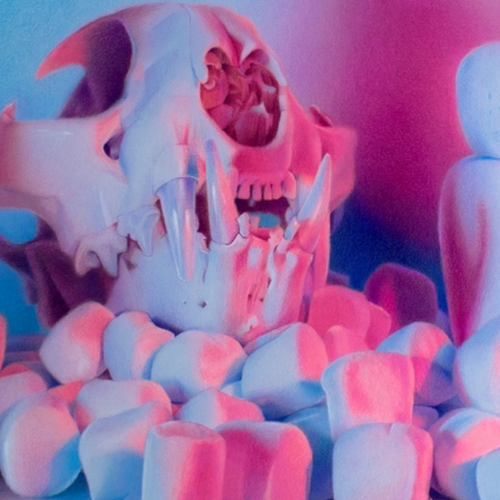JB Burke | Professor Jessica Burke’s (J.B.) research includes drawing using both traditional media and digital media, anatomy and osteology, identity/gender, and the scholarship of teaching and learning. During the summer of 2023, JB was one of five artists awarded an Artist Residency through the Hungarian Multicultural Center in Budapest, Hungary. In the spring of 2023, she had a solo exhibition, Ostentatious Affliction, of drawings and site-specific installations at the Milliken Gallery of Converse University in Spartanburg, South Carolina. She also shared her pedagogical research at the SECAC Annual Conference as part of a panel presentation, Re-Imaging the Classroom: New Strategies for Success and Community, that included her manuscript titled, “Reaching Constructivist Learners: Focusing on the Process of Learning not the Product” at the Maryland Institute College of Art in Baltimore, Maryland.

Robert (Bobby) Campbell | Professor Robert (Bobby) Campbell’s research includes community-engaged design, graphic novels, comics, and sequential art. Most recently he redesigned and coded the CHAMPS dashboard website in partnership with The Academy for Population Health Innovation (APHI). This unique collaboration between UNC Charlotte and Mecklenburg County Public Health, centered on designing a friendly, inviting, and engaging experience for a range of audiences in Mecklenburg County. The enhanced site appeals to diverse prospective visitors including: those living with HIV, those concerned about their HIV status, medical professionals treating the condition, and others in nonprofit, health, and governmental roles in Mecklenburg County.
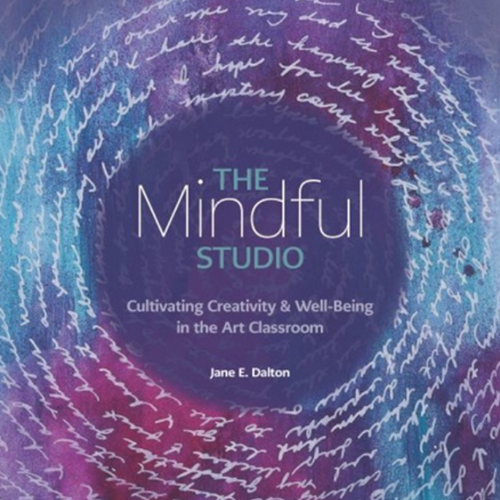
Jane Dalton| Dr. Jane Dalton’s research interests include mindfulness, contemplative pedagogy and practice, and transformative learning using the expressive arts. Professor Dalton’s recent research products include a book published in 2023 entitled, The Mindful Studio: Creativity, Mindfulness and Social Emotional Learning in the Art Classroom (Davis Publications; Worcester, MA); two co-authored article publications: “Pathways to Researching Spirituality in Art Education” in Arc: Journal of the School of Religious Studies, and “Moving through Liminal Space: Visual Journaling as a Creative Ritual and Spiritual Practice” in Pursuit of Well-being: Practical Approaches for Honoring the Whole Person through Art Education; and an K12 ArtChat (No. 111) audio podcast episode: “Creative Practice, Self-Care, & Mindfulness.”

Jae Emerling | Dr. Jae Emerling’s research includes art history, philosophy, modernism, visual culture studies, critical theory, aesthetics, history of photography, and memory and history. Most recently his fourth book was published in August of 2023. Entitled, Transmissibility: Writing Aesthetic History, this work has already received rave reviews including laudable statements such as “Jae Emerling accompanies his reader every step of the way in this exciting and erudite text: he works side-by-side with you to face the challenge of making sense of what it means to encounter art” (Homi Bhabha, Harvard University); “Very occasionally a writer will come along who changes what it might mean to write about art and culture, giving us the permission to take new liberties. In this dazzling, innovative and courageous book, Jae Emerling enacts a radical approach to thinking the intersections of the history and ontology of art” (Kamini Vellodi, University of Edinburgh); and “Jae Emerling has done the remarkable. He argues convincingly that transmissibility is both of and for aesthetics (where aesthetics is critical and transformative thinking), but that it is also of and for history too; which is to say, that it is attentive to both the ontological and the experimental-creative historiographic properties of art” (Marquard Smith, University College London).
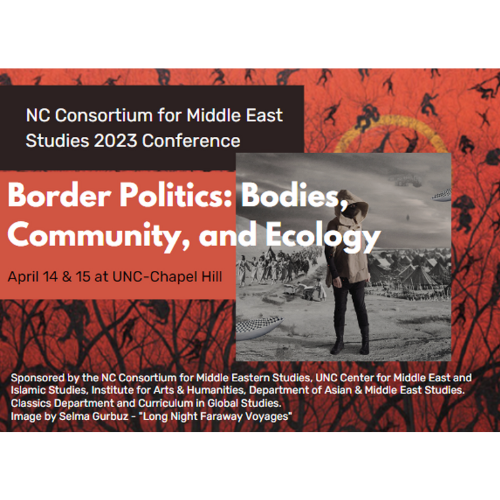
James Frakes | Dr. James Frakes’ research includes ancient Roman art and architecture, ancient Mediterranean visual culture, and UNC Charlotte Art & Art History departmental history. Most recently he delivered a talk at UNC Chapel Hill's Consortium for Middle Eastern Studies titled "The temple at Khirbet et-Tannur: Interpreting arrival within an epiphanic landscape."
David Gall | Dr. David Gall’s research areas include art education, aesthetic, educational philosophy, art theory, and semiotics. He is currently working on a book entitled, Windows on the Pale of Art: Eurocentrism, Art and Art Education, under contract with Cambridge Scholars Press. This follows his first book Countering Modernity: Toward a Nondualist Basis for Art Education. In addition, he recently presented two papers at the National Art Education Association (NAEA) conference titled “African and Asian Bri-collage Aesthetics: Recognizing Constructivism's Other Versions and Euro-Modernism's Suppressed Hybridity” and “Art Education's Eurocentrism: How to Deny Hybridity, the Substantial Presence of Others in Self.”
 Aspen Hochhalter | Professor Aspen Hochhalter’s research focuses on experimental photographic processes. Her creative practice explores the crossover between digital technologies, historic chemical-based photographic processes, and the use of experimental materials and techniques to expand the boundaries of the photographic image.
Aspen Hochhalter | Professor Aspen Hochhalter’s research focuses on experimental photographic processes. Her creative practice explores the crossover between digital technologies, historic chemical-based photographic processes, and the use of experimental materials and techniques to expand the boundaries of the photographic image.
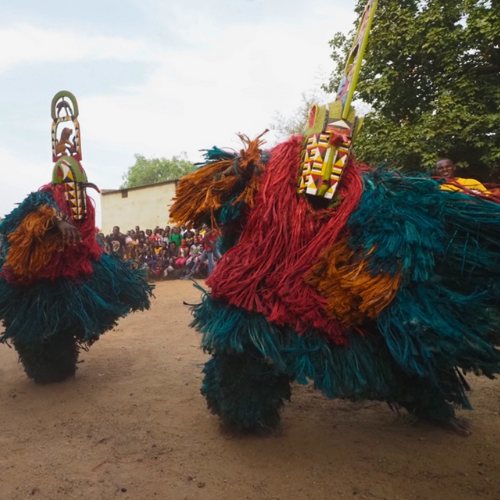 Lisa Homann | Dr. Lisa Homann’s research includes creative innovation, ethical methodologies, patronage, and performance in West African masquerade practices from the late 19th century to the present. Most recently she co-authored (with Amanda Maples, New Orleans Museum of Art and Jordan Fenton, Miami University, Ohio) a $500,000 National Endowment for the Humanities Implementation Grant for the internationally traveling exhibition and scholarly publication entitled “New Masks Now: Artists Innovating Masquerade in Contemporary West Africa.” The exhibition will open at the New Orleans Museum of Art (NOMA) in Spring 2025 before traveling to a host of venues, including the Frist Art Museum, Nashville; Mint Museum, Charlotte; National Museum of African Art, Smithsonian Institution; and the Museum of Fine Arts, St. Petersburg. A concurrent version of the exhibition will open at the Museum of Black Civilizations (MCN) in Dakar and travel to the Sierra Leone National Museum, Freetown and the National Commission for Museums and Monuments Calabar, Nigeria. Organized by Amanda M. Maples, NOMA’s Françoise Billion Richardson Curator of African Art; Jordan A. Fenton, Associate Professor of Art History at Miami University (Ohio); and Lisa Homann with collaborators Hervé Youmbi and Aimé Kantoussan, Director of Research at the MCN, this exhibition tells the stories of four contemporary artists working with the medium of masquerade (Hervé Youmbi from Cameroon, Chief Ekpenyong Bassey Nsa from Nigeria, David Sanou from Burkina Faso, and Sheku Fofanah from Sierra Leone).
Lisa Homann | Dr. Lisa Homann’s research includes creative innovation, ethical methodologies, patronage, and performance in West African masquerade practices from the late 19th century to the present. Most recently she co-authored (with Amanda Maples, New Orleans Museum of Art and Jordan Fenton, Miami University, Ohio) a $500,000 National Endowment for the Humanities Implementation Grant for the internationally traveling exhibition and scholarly publication entitled “New Masks Now: Artists Innovating Masquerade in Contemporary West Africa.” The exhibition will open at the New Orleans Museum of Art (NOMA) in Spring 2025 before traveling to a host of venues, including the Frist Art Museum, Nashville; Mint Museum, Charlotte; National Museum of African Art, Smithsonian Institution; and the Museum of Fine Arts, St. Petersburg. A concurrent version of the exhibition will open at the Museum of Black Civilizations (MCN) in Dakar and travel to the Sierra Leone National Museum, Freetown and the National Commission for Museums and Monuments Calabar, Nigeria. Organized by Amanda M. Maples, NOMA’s Françoise Billion Richardson Curator of African Art; Jordan A. Fenton, Associate Professor of Art History at Miami University (Ohio); and Lisa Homann with collaborators Hervé Youmbi and Aimé Kantoussan, Director of Research at the MCN, this exhibition tells the stories of four contemporary artists working with the medium of masquerade (Hervé Youmbi from Cameroon, Chief Ekpenyong Bassey Nsa from Nigeria, David Sanou from Burkina Faso, and Sheku Fofanah from Sierra Leone).
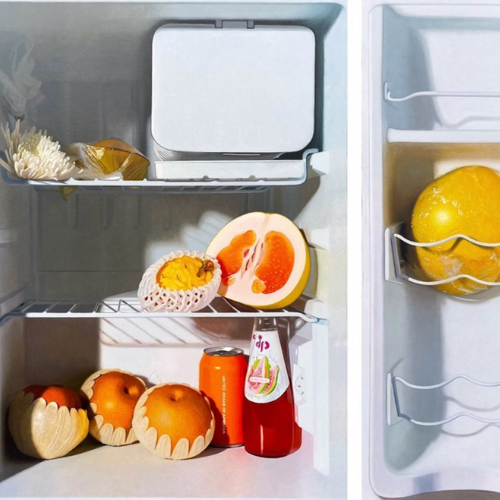 Andrew Leventis | Professor Andrew Leventis’ research includes the creation of intricately detailed oil paintings of contemporary vanitas, an early still life motif that uses flowers, fruit, and material possessions to symbolize the fleeting nature of life and passing of time. Most recently he participated in, Nature Morte, Contemporary Artists Reinvigorate the Still Life, an international group exhibition presented at UNC Charlotte, and previously traveled to Sweden, Norway, Poland, and the United Kingdom.
Andrew Leventis | Professor Andrew Leventis’ research includes the creation of intricately detailed oil paintings of contemporary vanitas, an early still life motif that uses flowers, fruit, and material possessions to symbolize the fleeting nature of life and passing of time. Most recently he participated in, Nature Morte, Contemporary Artists Reinvigorate the Still Life, an international group exhibition presented at UNC Charlotte, and previously traveled to Sweden, Norway, Poland, and the United Kingdom.
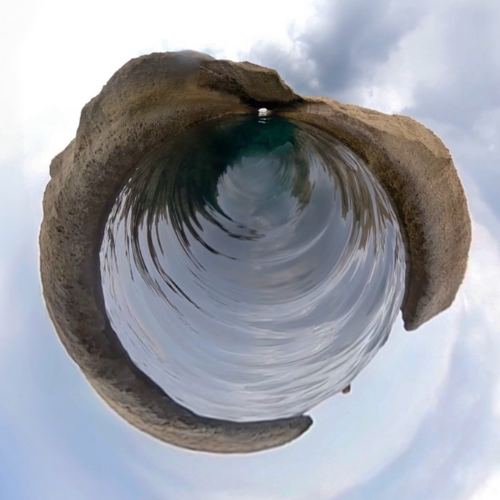 Jeff Murphy | Professor Jeff Murphy’s research encompasses immersive 360° video. He is currently committed to raising awareness about climate change and striving to bridge the gap between scientific data and emotional understanding. Immersive 360 video is a conduit for empathy, enabling viewers to viscerally experience the consequences of our actions on the delicate balance of our environment. Through this visceral connection, the outcome of Jeff’s research inspires dialogue, fosters environmental stewardship, and instigates positive change.
Jeff Murphy | Professor Jeff Murphy’s research encompasses immersive 360° video. He is currently committed to raising awareness about climate change and striving to bridge the gap between scientific data and emotional understanding. Immersive 360 video is a conduit for empathy, enabling viewers to viscerally experience the consequences of our actions on the delicate balance of our environment. Through this visceral connection, the outcome of Jeff’s research inspires dialogue, fosters environmental stewardship, and instigates positive change.
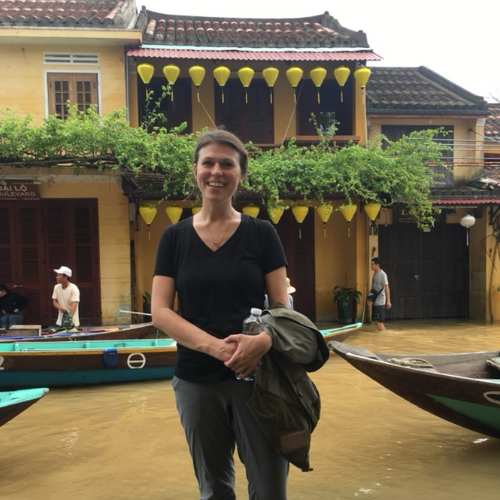 Mallory Nanny | Dr. Mallory Nanny’s research includes photography and time-based media, conceptual art, Vietnamese American studies, and global contemporary art. She recently defended her dissertation on photo-based works that reconstruct fragmented memories and stories of the Vietnam War into narratives.
Mallory Nanny | Dr. Mallory Nanny’s research includes photography and time-based media, conceptual art, Vietnamese American studies, and global contemporary art. She recently defended her dissertation on photo-based works that reconstruct fragmented memories and stories of the Vietnam War into narratives.
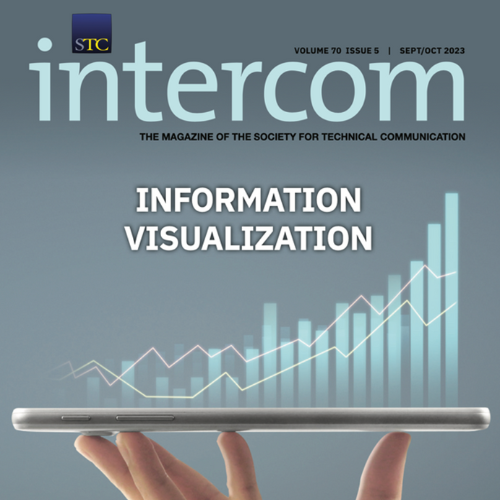 Christina Singer | Professor Christina Singer’s research interest includes ux/ui design, equitable design, and design research. Most recently her article titled, "Activating Qualitative Data and Building Equitable Visualizations” was published in Intercom, an industry magazine published for the Society for Technical Communication. Within this manuscript Professor Singer presents an analysis of equitable methods for data collection and information visualization, examines how to identify potential biases when using particular qualitative research methods, and suggests human-centered design principles and tools that can assist with creating more equitable designs. Furthermore, she reveals how critical it is for designer and developer teams to avoid stereotyping any culture or sub-culture with color palettes, iconography, and other imagery and graphic elements when storytelling with data.
Christina Singer | Professor Christina Singer’s research interest includes ux/ui design, equitable design, and design research. Most recently her article titled, "Activating Qualitative Data and Building Equitable Visualizations” was published in Intercom, an industry magazine published for the Society for Technical Communication. Within this manuscript Professor Singer presents an analysis of equitable methods for data collection and information visualization, examines how to identify potential biases when using particular qualitative research methods, and suggests human-centered design principles and tools that can assist with creating more equitable designs. Furthermore, she reveals how critical it is for designer and developer teams to avoid stereotyping any culture or sub-culture with color palettes, iconography, and other imagery and graphic elements when storytelling with data.
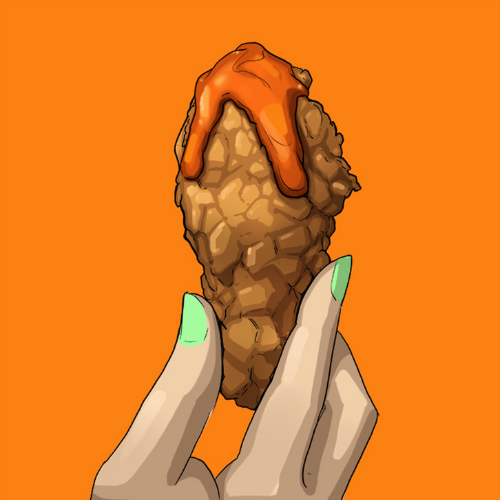 Nathaniel Underwood | Professor Nathaniel Underwood’s research interests include illustration and conceptual development applied to advertising and marketing. Most recently he created conceptual illustrations by the request of 500 Degrees Studios for Popeyes Louisiana Kitchen signature Wings campaign. The illustrations were used to direct photography and styling of all in-store marketing. The 5 new and permanent products were revealed in November 2023. Popeyes’ annual revenue is 4.5 billion per year. During the month of November and in conjunction with this campaign, Popeyes overtook KFC as the nation’s No. 2 chicken chain. Professor Underwood’s conceptual illustrations are key marketing items within 2800 Popeyes stores.
Nathaniel Underwood | Professor Nathaniel Underwood’s research interests include illustration and conceptual development applied to advertising and marketing. Most recently he created conceptual illustrations by the request of 500 Degrees Studios for Popeyes Louisiana Kitchen signature Wings campaign. The illustrations were used to direct photography and styling of all in-store marketing. The 5 new and permanent products were revealed in November 2023. Popeyes’ annual revenue is 4.5 billion per year. During the month of November and in conjunction with this campaign, Popeyes overtook KFC as the nation’s No. 2 chicken chain. Professor Underwood’s conceptual illustrations are key marketing items within 2800 Popeyes stores.
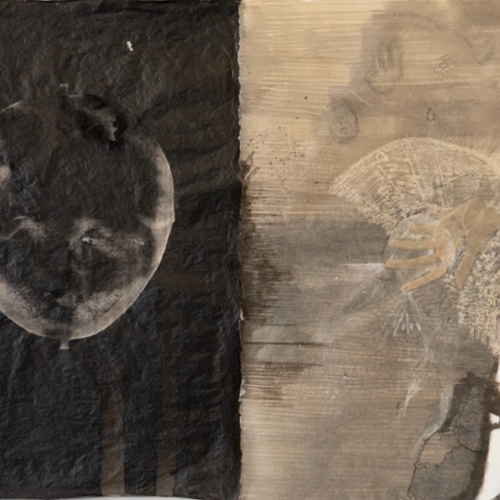 Erik Waterkotte | Professor Erik Waterkotte’s research areas include mixed-media, printmaking, installation art, papermaking, sustainability, material science, semiotics, analog verse digital technology, archetypes, religion, ritual, and utopias. He deliberates a variety of spiritual structures to create artworks that are the relics, tapestries, and tabernacles of his own, hypothetical cathedral. As a printmaker, Waterkotte’s approach to graphic media integrates photography, collage, and drawing. For him, print is not a technique of reproduction but a technique of indirect mark-making for generating interstitial layers. In his practice, printmaking becomes an act of transference and transformation. Although not initiated in any particular spiritual practice, Professor Waterkotte pursues an individual course of spiritual study, mining Western, Non-Western, Eastern, and esoteric practices.
Erik Waterkotte | Professor Erik Waterkotte’s research areas include mixed-media, printmaking, installation art, papermaking, sustainability, material science, semiotics, analog verse digital technology, archetypes, religion, ritual, and utopias. He deliberates a variety of spiritual structures to create artworks that are the relics, tapestries, and tabernacles of his own, hypothetical cathedral. As a printmaker, Waterkotte’s approach to graphic media integrates photography, collage, and drawing. For him, print is not a technique of reproduction but a technique of indirect mark-making for generating interstitial layers. In his practice, printmaking becomes an act of transference and transformation. Although not initiated in any particular spiritual practice, Professor Waterkotte pursues an individual course of spiritual study, mining Western, Non-Western, Eastern, and esoteric practices.
